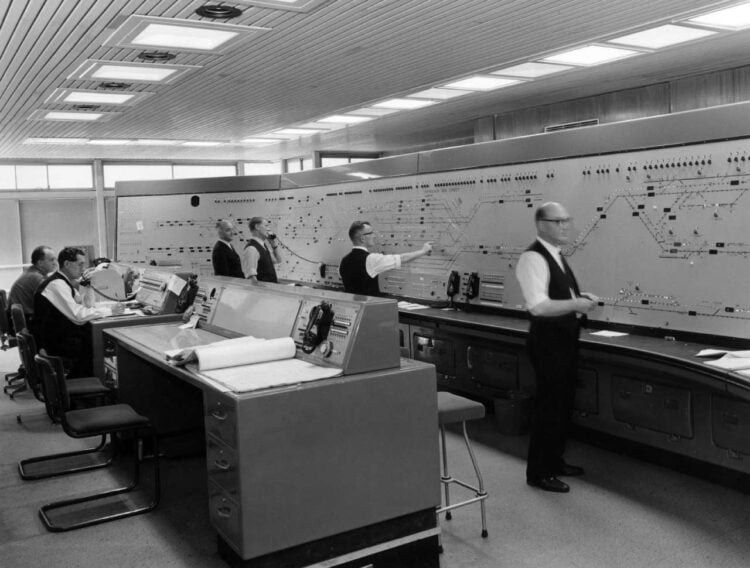Network Rail has published ‘virtual reality' tours inside Birmingham's iconic signal box, which enthusiasts can access here.
The box stopped operating a year ago, and in March sixty visitors, picked at random from numerous applicants, were taken on a guided tour of the disused Power Signal Box (PSB).
In September, the University of Birmingham' Human Interface Technologies (HIT) team carried out a comprehensive scan of the insides of the Power Signal Box (PSB). The team made a series of 3D laser scans and taking panoramic images over two floors, including the relay room and signalling panel. It then stitched the various scans and images together to build an interactive online model which is compatible with virtual reality headsets.
This is now freely accessible on the internet.
Built in the 1960s as part of the West Coast main line route modernisation, one of four power signal boxes in the West Midlands, replacing sixty-four manually operated signal boxes. The PSB directed up to twelve hundred trains a day, adding up to tens of millions over its fifty-six years in operation.
It used the Westpac Mk 1 signalling system, and was the last signal box to do so until it closed.
In the months leading up to Christmas 2022, workers installed equipment for the switch from analogue to digital signalling. On Christmas Eve 2022, the switch was made, and control for all train movements through Birmingham New Street – Britain's busiest station outside of London – passed to the West Midlands Signalling Centre in east Birmingham.

The building will have a new role as a training academy for railway signallers, and conversion work for this has begun already. The outside of the signal box is Grade II listed and will not change. It was listed in 1995 because of its ‘dramatic and exceptional architectural quality' and ‘strongly sculptural form'.
The building is seen as one of Birmingham's best surviving examples of Brutalist architecture, a style which features imposing facades built from pre-cast concrete.
More information about the history of Birmingham New Street station is available here.
The University of Birmingham's HIT team is a research group established in 2003 by Professor Bob Stone, a 37-year ‘veteran' of the international Virtual Reality community. Prof Stone and colleague Dr Vish Shingari completed the 3D scanning and ‘spherical' panoramic imagery of the Birmingham PSB in a single day, using a Matterport LIDAR-based 3D scanner and a twin-sensor/lens Insta360 ONE camera. They placed these devices at various locations in the PSB's Relay and Console Rooms, located on two floors, building an accurate, high-resolution 3D image of the building, which is often referred to as a ‘digital twin'.
Full instructions on accessing the virtual reality tour is available here.
John Korbes, Network Rail local operations manager, said: “Having worked at Birmingham Power Signal Box for many years, I'm not alone in saying we all had heavy hearts when we said goodbye to a building which had been integral to the smooth running of the national railway network.
“In its day, the technology inside was cutting edge, and until the very end it worked reliably, day in, day out, getting millions of passengers and millions of tonnes of goods to where they needed to be, over six decades.
“So now, nearly a year on from that emotional day, it fills me with great pride and satisfaction that the team at University of Birmingham have recorded the signal box, nearly exactly as it was when it was powered down, as a permanent reminder of the huge role it played in our railway's history.”
Bob Stone, emeritus professor in eXtended Realities at the University of Birmingham, said: “It's been a real privilege to capture the New Street PSB digitally before its historical contents were dismantled and lost forever. Being able to use sophisticated 3D scanning technology to record such a complex installation in less than half a day just goes to show how powerful it is in helping to preserve important regional and national railway heritage assets, leaving a legacy to be enjoyed by future generations, young and old”.